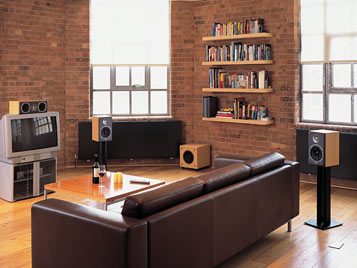The perfect music recording adds as little as possible to the original performance: ideally, you should be able to hear the artist¡¯s voice or the instrument he or she is performing on, in their original unvarnished form, as if they are actually there in the room performing especially for you.
By contrast, every sound you hear in a movie theater is a trick. No one has ever stuck microphones next to a nuclear explosion and recorded it. No-one has ever recorded a T-Rex roar, the crash of a passenger liner as it snaps in two or the howl of a spaceship as it screams past your ear. These are 'best guess' sounds, designed to create a convincing and impressive sonic experience that adds to the movie theater experience- but they're not

In fact, every sound in a theatrical soundtrack is generated after the film has been completed. The dialogue is re-recorded in a studio, the music is introduced and then the sound effects are added, gleaned from a variety of audio sources, some of which can be quite unusual. For example, biological sounds-whales, especially-can be used to help reinforce deep bass effects in explosions, while the sound of the Titanic breaking in two was created using a gravity-driven concrete car crusher and some substantial decking planks. The sound designer¡¯s art is also constrained by the need to preserve the most crucial element of the movie soundtrack, the dialogue. Most directors object to having their scripts obscured in a sonic melee, and are prepared to sanction some quite unusual sonic tricks to preserve clarity.
This distinction is important, because it helps to better understand the function of a home theater system. Unlike hi-fi, it's not there to convey reality: it's there to create it, or whichever version of it the director is attempting to reproduce. To that end, the best systems should 'fool' you into believing that you are sitting in a movie theater, enjoying the entertainment experience laid before you every bit as much as you would in the 'real' environment.












